Northeast/Mid-Atlantic Project Resources:

Beach-building (accretion) and erosion are natural processes. The desire to live and build structures on our coastlines exposes our homes, roads, commercial and industrial facilities, shipping ports, marinas, and other buildings to shoreline erosion.
Why do we care about the erosion along our coasts?
Our coastlines are currently home to 40% of the U.S. population. There is a long trend of higher growth on the coasts. The coastal area of the U.S. is twice as developed as the rest of the country: 8.8%, versus 4.09% of the interior.
As global sea level rises, wave action and storm surge increase the likelihood of extensive coastal erosion. It is estimated that coastal erosion costs roughly $500 million per year for U.S. coastal property loss, including damage to structures and loss of land. As our climate continues to change, the increasing frequency of extreme weather threatens our shoreline communities.
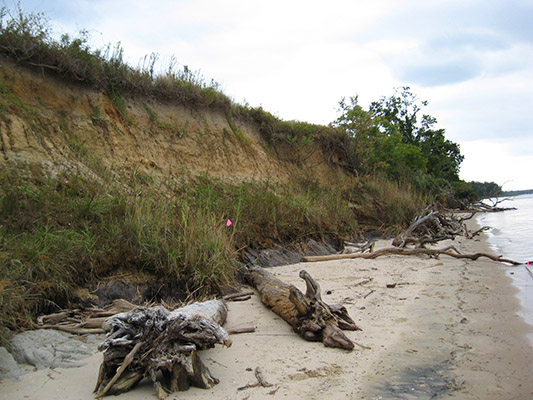
Our coastlines are currently home to 40% of the U.S. population. There is a long trend of higher growth on the coasts.
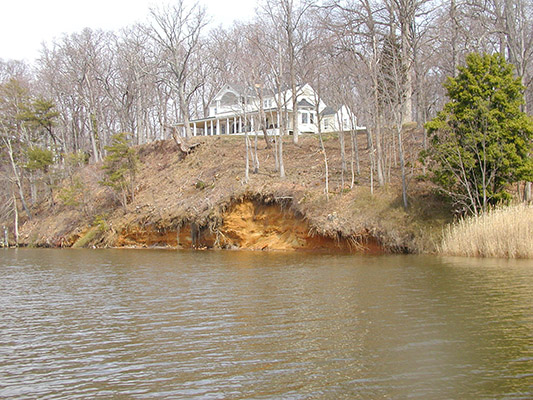
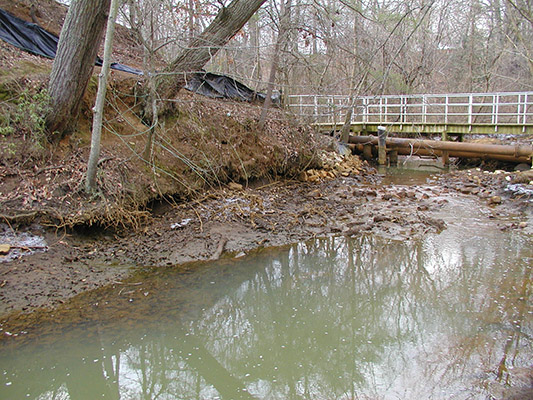
The rocky beaches of the Northeast play host to a booming fishing industry, as well as many historic beachfront homes and lighthouses. Residents of this region are no strangers to rough weather, with seasonal storms and infamous Nor’easters hammering beaches with wind and rain each year. During periods of fair weather, watersports and recreational fishing draw tourists in droves.
The last 70 years have introduced drastic changes to the landscape of our Mid and North Atlantic beaches. Before the 1950s, a period of natural accretion motivated the construction of a great deal of beachfront property and industry. When a combination of weather events and human activities caused patterns to revert to erosion in more recent decades, rapidly disappearing coastlines threatened these investments. As sea levels continue to rise and watercraft damage reefs and alter tidal flow patterns, erosion has become the primary economic and ecological concern of the coastal Northeast.
The capes and barrier beaches of the Northeast were formed by receding glaciers 14,000 years ago. These features lack the bedrock foundation of the main coastline and therefore experience drastic fluctuations in tide levels due to storm surges, seasonal rainfall, and long-term weather patterns. As warming global temperatures raise sea levels, the beaches of New England are vanishing rapidly. In Nantucket, Massachusetts, the South Shore disappears at approximately 15 feet each year. If shoreline erosion continues at its present rate, many homes, businesses, and historic structures will be at risk.
Both erosion and accretion can occur naturally. Coastal erosion in the Northeast formed many of the region’s distinctive marshes and tidal flats, which are critical for biodiversity. As oceans warm, the tidal vegetation and reefs that anchor beaches struggle to thrive. Traditional methods of preserving shorelines, like bulkheads and seawalls, block tidal surges from carrying away beach sand, but they do not address the loss of biodiversity that accelerates erosion.
Living shoreline restoration can replenish the ecosystems that are a natural part of the erosion and accretion cycle.


Where it is feasible, returning our coastal estuaries and shoreline to a natural, undeveloped state can increase the resilience to storms, flooding, erosion, and other threats to these communities. Coastal wetlands are well known to be natural sponges that absorb floodwaters, putting the brakes on destructive wave action, and mitigating coastal erosion. Natural shorelines buffer storm surges, sequester carbon and other pollutants, and support a healthy habitat for commercially and recreationally important fish species.
Living shorelines, soft shore protection, Green Shores for Homes, and other hybrid approaches are nature-based solutions to coastal erosion that can mimic nature while protecting your property and increasing critical habitat for marine species. Coastal restoration projects may replace a seawall or bulkhead with a natural beach, soft shore protection, salt marsh bordered by an oyster reef, or similar structure. One study found that living shorelines removed more than 50% of nitrogen from the water, and more was removed as sites matured.
Living shorelines are natural solutions to coastal erosion.
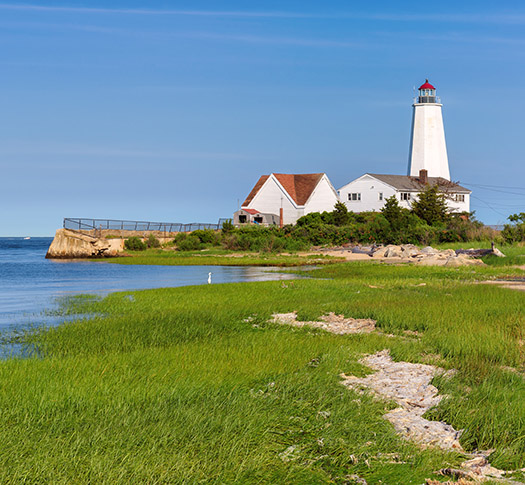
Protecting coastal communities has become increasingly important as the population grows and sea levels rise. However, shoreline hardening has harmful impacts on wildlife and fish habitat. One study found that seawalls supported 23% lower biodiversity and 45% fewer organisms than natural shorelines.
Soft shore protection, or living shorelines, is a natural approach to reduce erosion and flooding, while also creating or maintaining habitat. Living shoreline projects may replace a seawall or bulkhead with a natural beach, soft shore protection, salt marsh bordered by an oyster reef, or similar structures.
One study suggested that marshes protect shorelines from erosion better than bulkheads. It found that Hurricane Irene damaged 76% of bulkheads surveyed, while very little or no damage was found in marshes protected by living shorelines.
If you live on the shoreline, you will find a softer shoreline to be more beautiful and resilient than a bulkhead. They are also much cheaper to install and maintain than hard structures such as bulkheads and seawalls. Living shorelines are often more effective if they stretch along an entire beach rather than just one property. Consider connecting with your neighbors to build living shorelines.
If you do not live on the shoreline, consider volunteering to help with projects to restore coastal areas, such as planting marsh grasses and removing invasive plants.
A marsh sill is a type of low-profile stone structure used to contain sand fill to create a newly planted marsh that dissipates wave energy so that the marsh can establish and help reduce erosion farther inland.
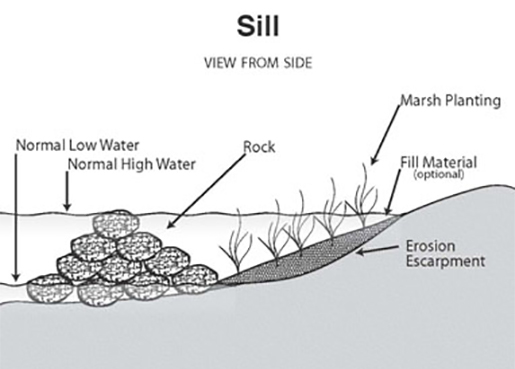
North Carolina Environmental Quality
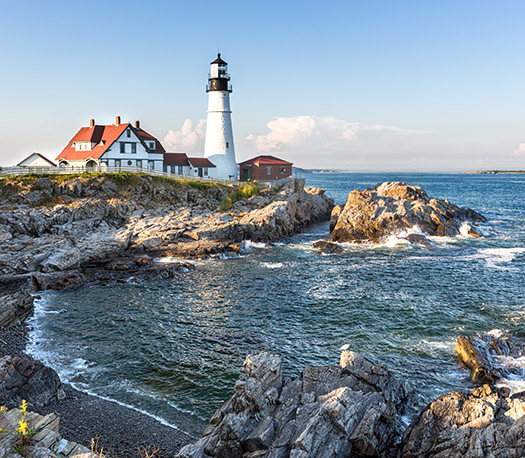
We need your help to improve the Toolkit by completing our easy, 3-minute survey. Your insight is valuable to us.